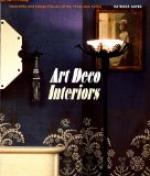With Napoleon’s assumption of regal power and habits, we get the Empire (he had been to Rome and Egypt), pseudo-classic in outline and richly ornamented with mounts in ormoulu characteristic of the Louis.
The Empire period in furniture was dethroned by the succeeding regime.
When we see old French chairs with leather seats and backs, sometimes embossed, in the Portuguese style, with small regular design, put on with heavy nails and twisted or straight stretchers (pieces of wood extending between legs of chairs), we know that they belong to the time of Henry IV or Louis XIII. Some of the large chairs show the shell design in their broad, elaborate stretchers.
The beautiful small side tables of the Louis and First Empire called consoles, were made for the display of their marvellously wrought pieces of silver, hammered and chiselled by hand,—“museum pieces,” indeed, and lucky is the collector who chances upon any specimen adrift.
CHAPTER XIX
THE PERIODS OF THE THREE LOUIS
The only way to learn how to distinguish the three Louis is to study these periods in collections of furniture and objects of art, or, where this is impossible, to go through books showing interiors of those periods. In this way one learns to visualise the salient features of any period and gradually to acquire a feeling for them, that subtle sense which is not dependent wholly upon outline, decoration, nor colour, but upon the combined result.
French writers who specialise along the lines of interior decoration often refer to the three types as follows:
Period of Louis XIV—heavily, stolidly masculine;
Period of Louis XV—coquettishly feminine;
Period of Louis XVI—lightly, alertly masculine.
One soon sees why, for Louis XIV furniture does suggest masculinity by its weight and size. It is squarely made, straight (classic) in line, equally balanced, heavily ponderous and magnificent. Over its surface, masses of decoration immobile as stone carving, are evenly dispersed, and contribute a grandiose air to all this furniture.
There was impressive gallantry to the Louis XIV style, a ceremonious masculine gallantry, while Louis XV furniture—the period dominated by women when “poetry and sculpture sang of love” and life revolved about the boudoir—shows a type entirely intime, sinuously, lightly, gracefully, coquettishly feminine, bending and courtesying, with no fixed outline, no equal balance of proportions. Louis XV was the period when outline and decoration were merged in one and the shell which figured in Louis XIV merely as an ornament, gave its form (in a curved outline) and its name “rococo” (Italian for shell) to the style.
As a reaction from this we get the Louis XVI period, again masculine in its straight rigidity of line, its perfectly poised proportions, the directness of its appeal to the eye, a “reflection of the more serious mental attitude of the nation.” Louis XVI had an aristocratic sobriety and was masculine in a light, alert, mental way, if one can so express it, which stimulates the imagination, in direct contrast to the material and literal type of Louis XIV which, as we have said, was masculine in its ponderous magnificence, and unyielding over-ornamentation.




